The sun is finally coming out, the birds are chirping, and the temperatures are rising! The long, dark, cold days of winter in Canada are behind us, and if you’re anything like us you’re itching to get back to business and into competition shape. But just like the winter, the change of season brings new feeding challenges and extra things to keep in mind to safely transition your equine onto his new diet. After spending months relying strictly on hay forage and grain concentrates while pastures were under ice and snow, your horse needs time to slowly adapt to a diet that likely will include lush green pasture and an increase in energy requirements.
Beware of that lush spring pasture.
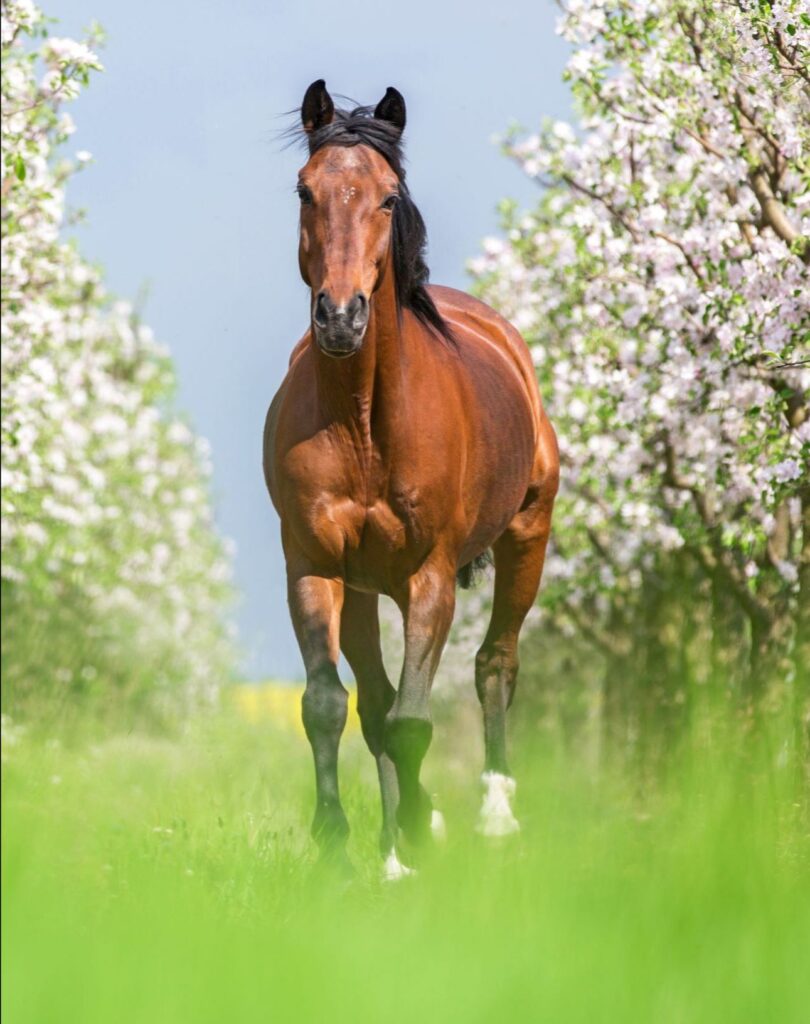
In a few short months, most pastures will be long, green, and perfect for grazing for your equine. Grass pastures are beneficial for a variety of reasons: they are cost effective, they are a constant feed supply for your natural grazer, and they contain much more moisture than hay forage being fed through the winter and therefore act as an important water additive while being consumed so there is less fear of impaction colic.
However, lush spring pastures bring about their own cautions. Spring pasture is by far the most inviting for your horse with it being sweet, high calorie and nutrient dense compared to the hay they’ve received all winter and even pastures later in the summer into fall. This extra-lush grazing leaves overweight horses or those prone to metabolic disorders vulnerable to over consumption, potentially resulting in laminitis.
If you don’t want your overweight or laminitis prone horse to miss out on the socializing that comes with pasture grazing, don’t be embarrassed to strap on a grazing muzzle. They may not look appealing, but they act as a control mechanism for your over-eater similarly to a hay net. They can still enjoy the delicious spring grass while staying safe from it’s sugary hidden dangers. Not wanting to use the grazing muzzle or have a Houdini horse who won’t keep it on? Keep these types of horses in dry lots feeding hay as close to their pasture pals as possible.
Use rotational grazing.
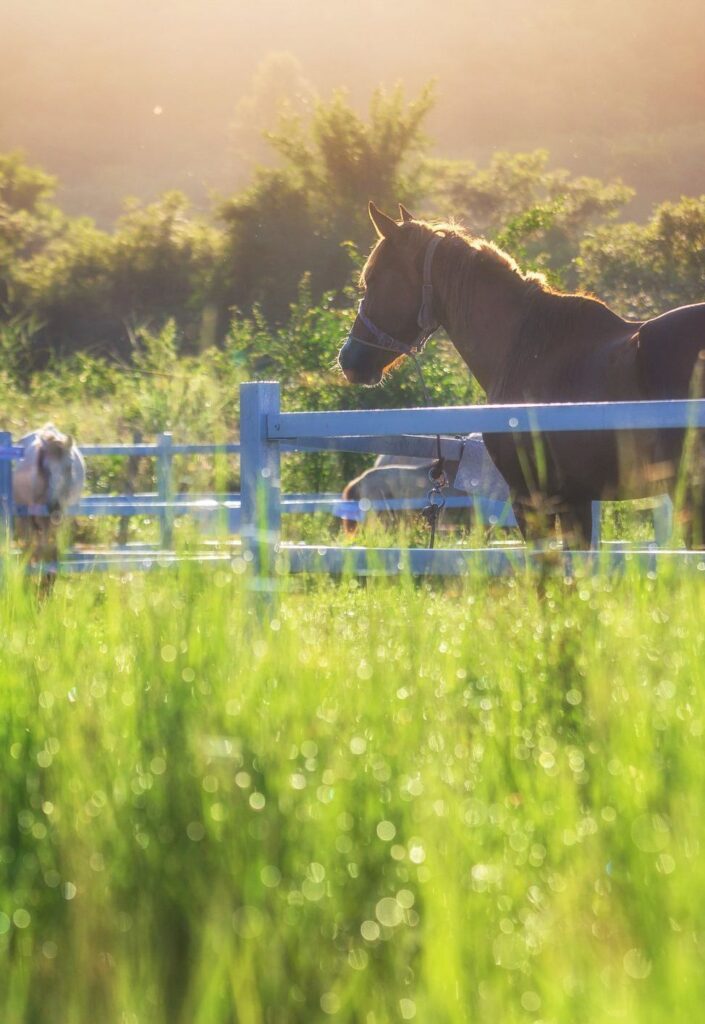
Rotational grazing has a variety of benefits to both yourself and your horse. Not only is rotational grazing a way to keep your horses safe from consuming the increased calorie and nutrient dense forage, it also spreads the use of this natural forage. As always, it is best to introduce your horses to spring pastures slowly rather than just letting them loose on them, regardless of how eager they seem to be to eat it. A few hours a day at first is more than enough to keep them happy, but also healthy.
Spring pastures are ideal for pregnant/lactating mares, growing babies, competition horses or naturally hard keepers since their energy and protein needs are substantially higher. Those who are a good weight, are in light work, or are prone to laminitis should have minimal pasture time in the early spring or wear a grazing muzzle (as discussed above) to be sure they are not over consuming the lush pasture.
Rotate your horses from grazing pastures to feeding your remaining hay in dry lots consistently in early spring – this will protect them from metabolic issues and will also extend the length of your pasture life. When feeding in dry lots it is best to use a hay feeder or hay net to try to minimize the dust your horse consumes.
Gearing up for competition.
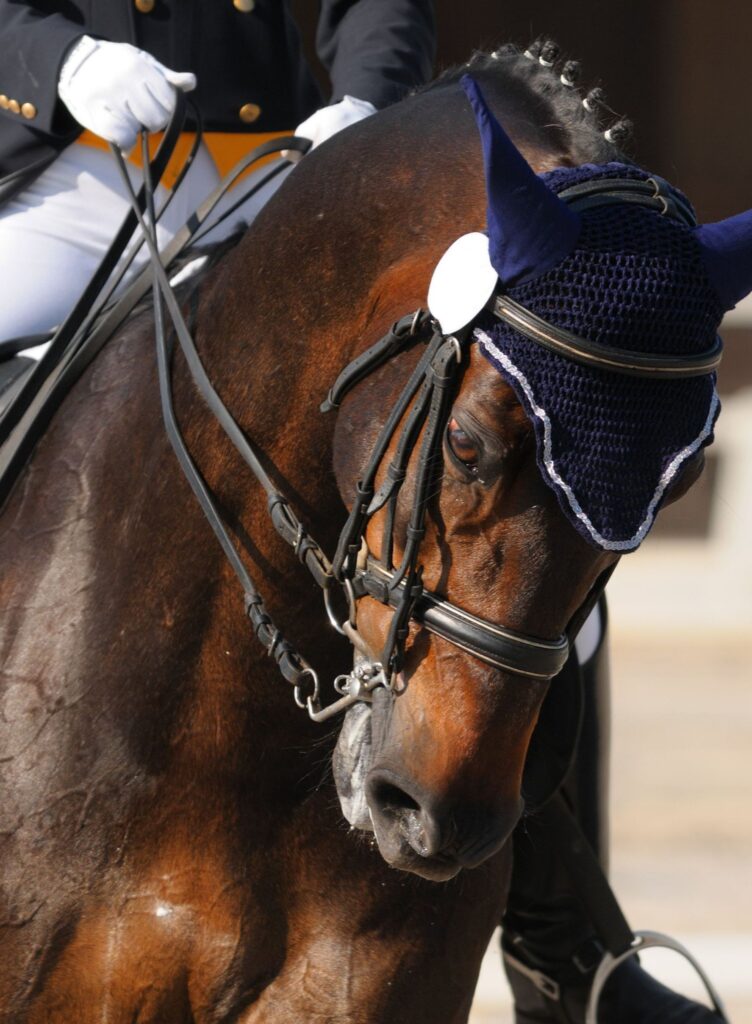
We can’t even mention spring without noting that it is by far the best time for horse owners who have been waiting or training all winter for show season to start. The first competitions get under way during the spring, so your horse’s diet should be up to par to perform and look their best.
No matter the time of year, forage should be in continuous supply, so it is imperative to check your remaining hay for mold and quality. Even if on pasture, travelling horses will always need hay on their show day trips, so quality hay is a must. On top of hay, the competition horse has substantially higher energy needs. Whether a barrel racer, jumper, eventer or racer – chances are high that your performance horse will need added energy in the form of a complete feed or concentrates to both perform and look their very best. As your training schedule increases in intensity, keep a close eye on the body condition of your athlete so you can increase calories and energy as needed.
Vitamin and high fat supplements are generally added to the diet in the spring to bring out the shine in coats and manes. Chances are, competition has started a few weeks or even months before pastures are ready to be consumed, so good feeds with high fats and essential vitamins and minerals are a great way to have your horse looking the best they can from the inside out to impress at show time.
No matter what level of activity your horse is in, they can benefit from a well-rounded feeding program that includes good quality hay. Horses with extra energy requirements can be on a complete feed, while those easy keepers should likely be on a supplement or balancer to make sure they are getting all of those vitamins and minerals to keep them healthy from the inside out. Check out some of our featured products for back to competition work, below!
For more information or to schedule an on-farm call or hay analysis from one of our reps, visit our website, contact us, or email us directly at: happyhorses@masterfeeds.com
Product Spotlight
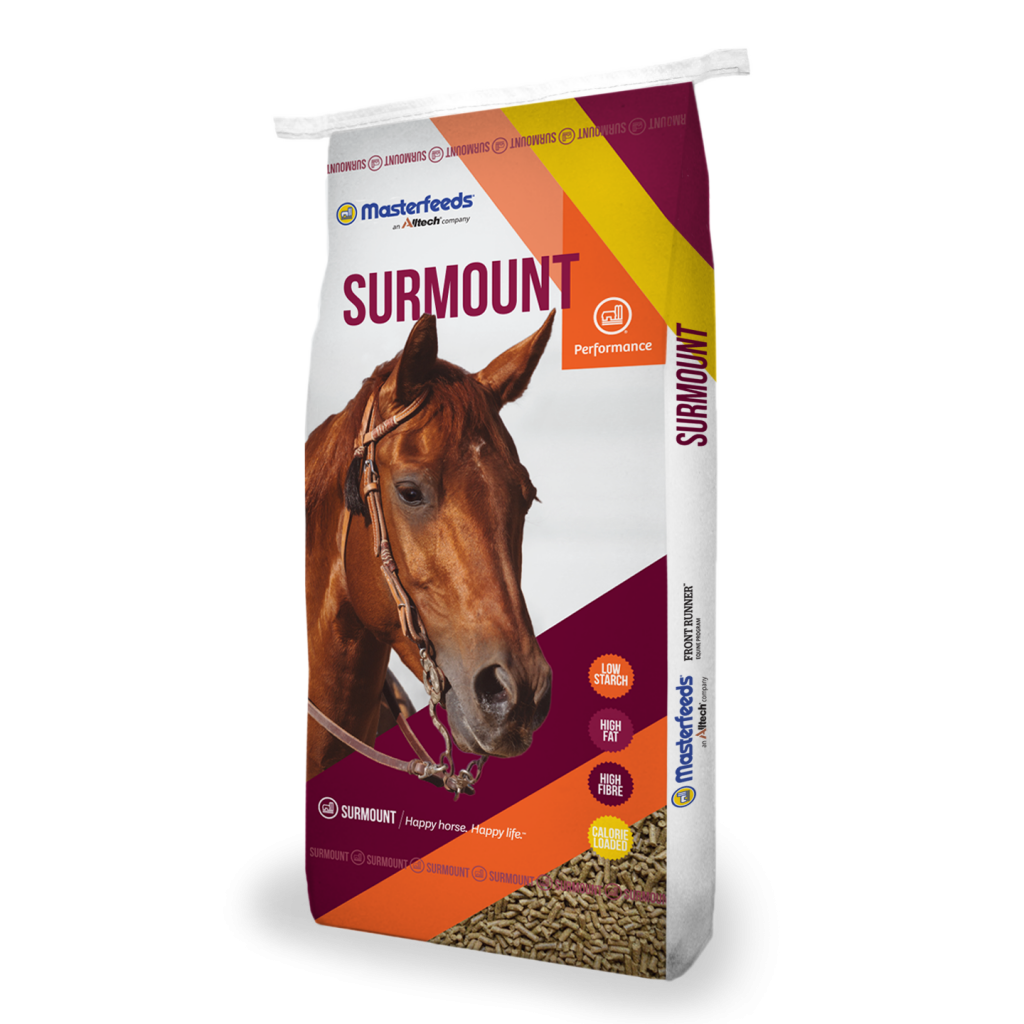
SURMOUNT (PELLET) EAST | WEST
FOR ALL TYPES OF EQUINE ATHLETES
Surmount is our gold standard for fat and fibre nutrition for your horse. This premium ration is relatively high in calories, very palatable, and an excellent choice for those owners and trainers looking for a premium fat and fibre ration that is well fortified with vitamins and minerals. The controlled starch content provides a relaxed working energy for the horse, making it a great choice for hunter trainers, western pleasure trainers, amateur dressage and any other discipline looking for quality feed without making horses “hot”.
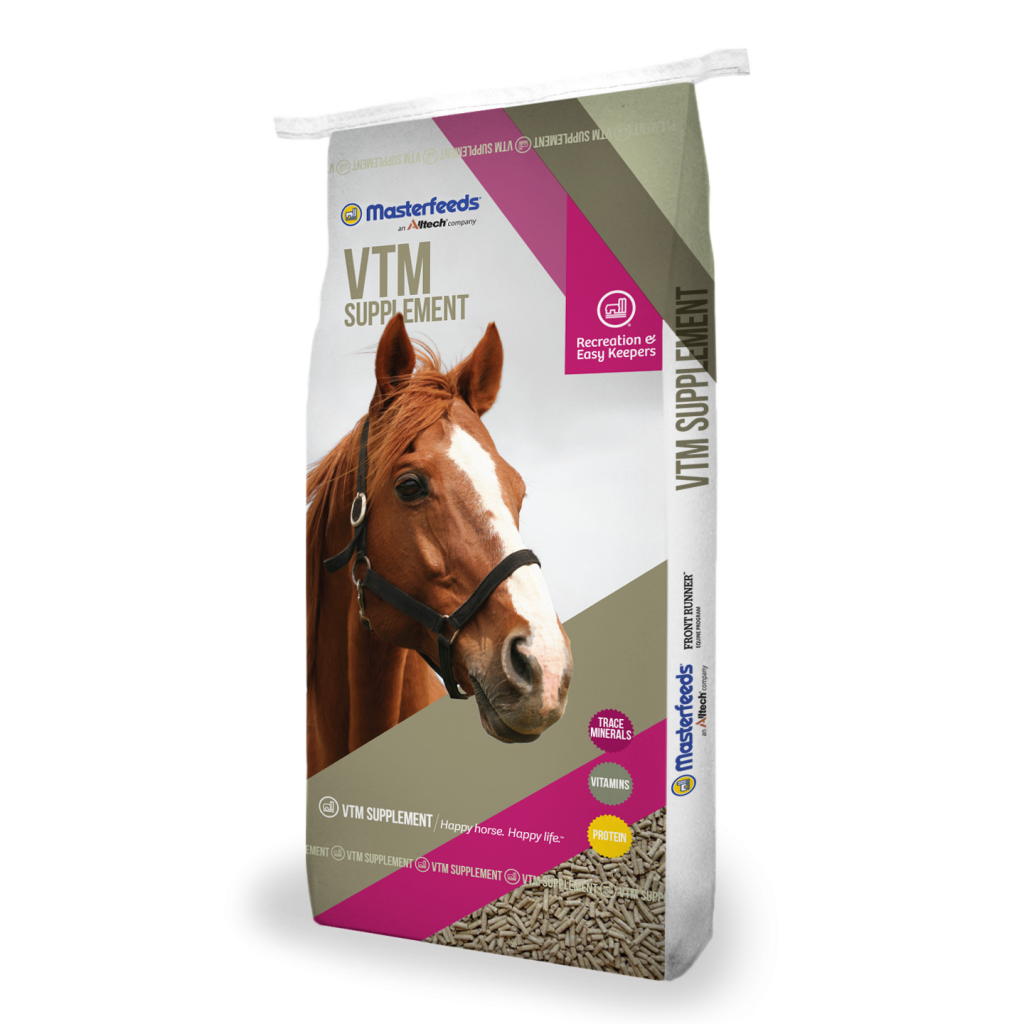
VITAMIN/MINERAL SUPPLEMENT (PELLET) EAST | WEST
FOR ALL CLASSES OF HORSES WHEN EXTRA NUTRIENTS ARE REQUIRED
A trace mineral and vitamin supplement with high protein. It can be mixed with grains to make your own ration or top dressed on complete feeds to add additional minerals, vitamins and protein. Very palatable and versatile, it’s a great choice for all classes of horses when extra nutrients are required without the extra fat content.
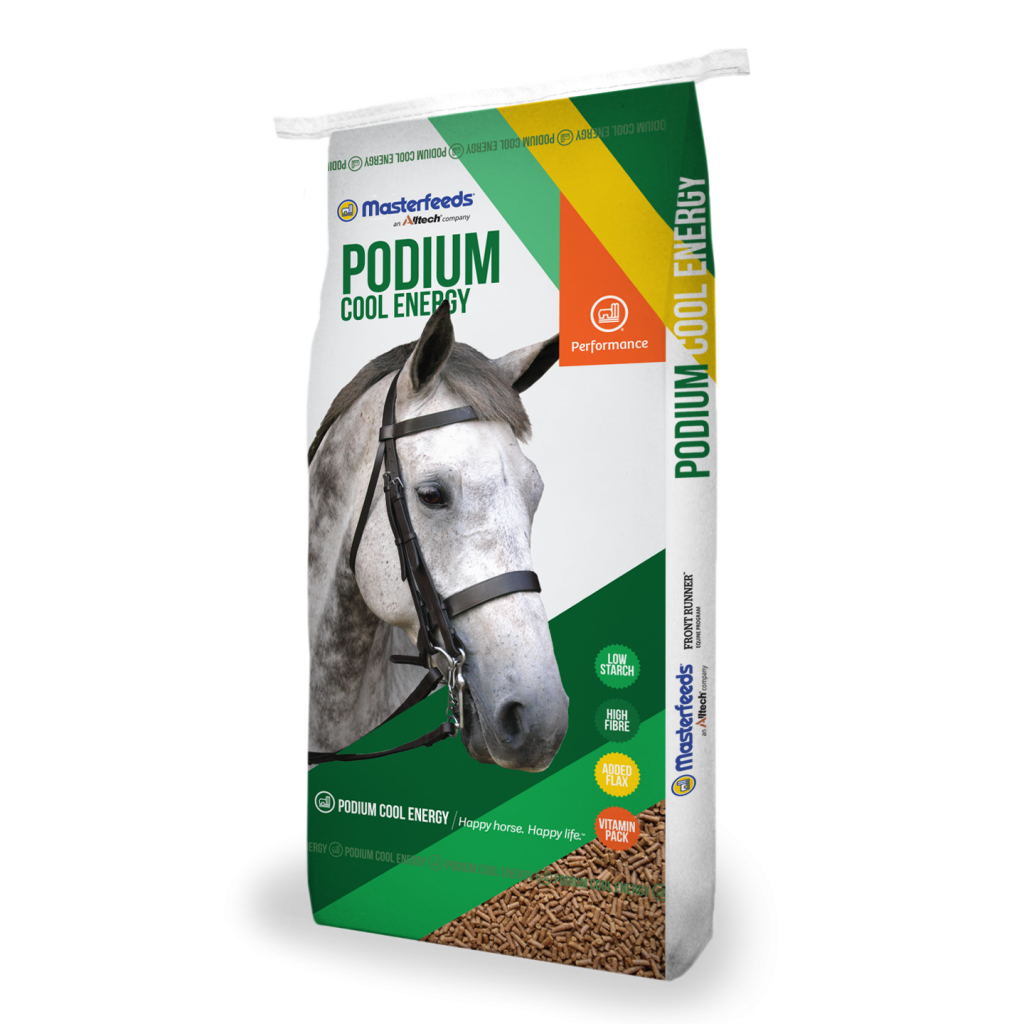
PODIUM COOL ENERGY (PELLET) EAST | WEST
FOR HIGH PERFORMANCE ATHLETES
A favourite for owners and trainers looking for a very low starch feed for high performing athletes. With proven results in reducing ulcer incidence and tying up, it is a great choice for standardbred racehorses, eventers, and any trainers and riders looking for an ultra low starch ration. Added flax provides an excellent source of Omega-3 and it is fortified with our premium vitamin mineral pack for a complete and balanced feed.
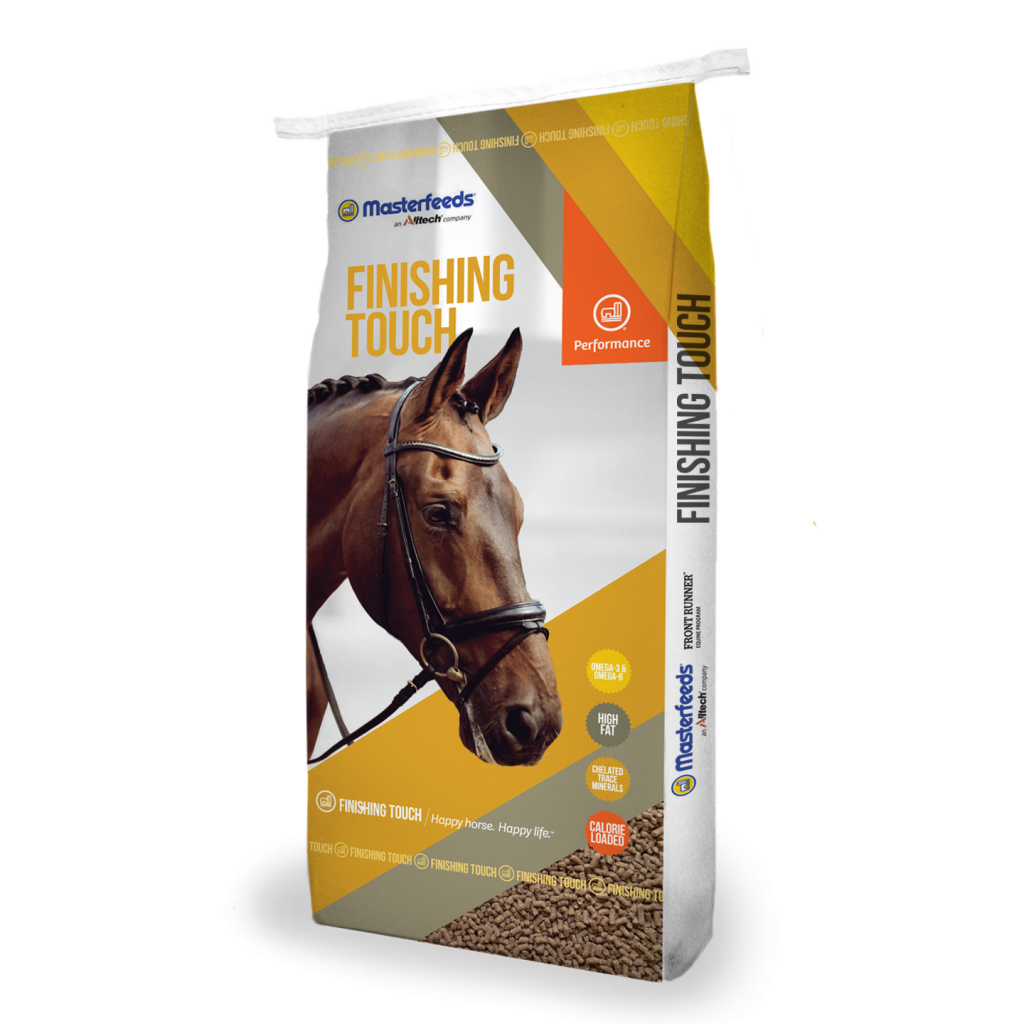
FINISHING TOUCH (CRUMB) EAST | WEST
FOR IMPROVED PERFORMANCE, WEIGHT GAIN & COAT CONDITION
A smart energy addition to any developmental diet. This high fat supplement is designed to be top-dressed on a balanced complete feed to increase caloric density and add fat calories as an energy source. A very palatable formula for improved performance, weight gain and coat condition. This is an excellent choice for extra fit and finish on sale and show stock and for enhancing fertility during breeding season for both mares and stallions.
Product Spotlight
- Winter Nutrition Tips
- Feeding the Mare and Foal
- Breaking Down Nutrition
- Feeding for Performance
- All About Hay
- Feeding the Senior Horse
- Fall Nutrition Tips
- Feeding Supplements
- Economical Horse Management & Feeding Tips
- The Beginner’s Guide to the Equine Digestive System
- Macronutrients: The “Big Three” of the Equine Diet
- Feeding the Racehorse
- Feeding the OTTB
- Feeding the Active Senior
